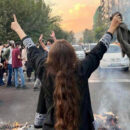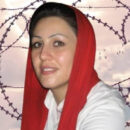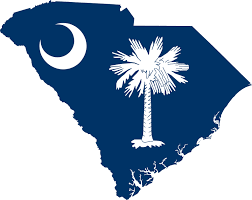West must pay direct attention to Iran, not its proxies

Politico | BY CHUCK WALD | JANUARY 19, 2024
Addressing the impact of Houthi actions is a pressing issue, but efforts to resolve the crisis should be focused on the real source behind the conflict — Tehran.
Chuck Wald is a retired U.S. Air Force general and was Deputy Commander, U.S. European Command.
Following a series of Houthi attacks on international vessels in the Red Sea, military forces from the United States and the United Kingdom — supported by several other nations — began conducting operations targeting Houthi positions in Yemen last week. But while addressing the impact of Houthi actions on international maritime security is a pressing issue, efforts to resolve the crisis should be focused on the real source behind this unfolding crisis — and the head of the snake is in Tehran.
Since the outbreak of the conflict between Israel and Hamas in October, discourse surrounding the potential expansion of this war has gained prominence, with mounting concerns that other major powers, including the U.S., could become entangled in the escalation. Today, the trajectory unmistakably points in this direction, with a singular entity bearing responsibility: the Iranian regime.
Despite Tehran’s disavowals of involvement in the attacks targeting commercial shipping in the Red Sea and American military forces in Iraq and Syria, the Shiite militias executing these actions — including the Yemeni Houthis — are widely acknowledged as the regime’s proxies. And while Tehran maintains these groups operate autonomously, driven solely by their perceived self-interest, a plethora of evidence points to its direct complicity, also evident in their overt endorsement of these attacks.
Tehran has meticulously cultivated a decades-long legacy of establishing and sustaining terrorist proxies in the region. And Hamas’ attacks on southern Israel on October 7, 2023, which triggered the current conflict, is intricately connected to this strategic framework. Supreme Leader Ali Khamenei even characterized Hamas’ assault as an “irreparable defeat” for America’s paramount regional ally, foretelling its swift culmination in the “eradication” of Israel.
Subsequently, the Iranian regime has done all it can to ensnare the U.S. in the conflict. Under Iran’s patronage, Hezbollah commenced provocations along Israel’s northern frontier, while the Iran-backed Houthi rebel faction initiated its assaults on maritime shipping, with the explicit objective of virtually sealing off the Red Sea. And if left unchecked, these preliminary maneuvers may serve as a prelude to a more extensively orchestrated offensive.
The U.S. has responded to these provocations by forming a new maritime security coalition and executing limited retaliatory strikes against facilities used by Iraqi and Syrian militias, which targeted U.S. service members over 100 times since mid-October. However, the White House has been careful to refrain from directly confronting the instigator in Tehran.
Of course, this isn’t a call for the U.S. to initiate hostilities with Tehran. However, if Western powers genuinely aim to prevent the eruption of a larger conflict, they must be prepared to take actions that deter will the driving force behind all these aforementioned non-state actors. For as long as their financing and leadership remain intact within Iran, merely deterring the proxies themselves will be insufficient.
And though sanctions and diplomatic pressure can disrupt the Iranian regime, the U.S. and its allies also have an opportunity here to bolster opposition movements dedicated to undermining Tehran.
Increasing numbers of Western policymakers and military experts acknowledge the existence and viability of a pro-democracy movement with widespread support within Iran. Since 2014, this movement has been led by a nationwide network of “Resistance Units” affiliated with the People’s Mojahedin Organization of Iran (MEK). And these Resistance Units’ unmistakable surge in activity was evident during uprising triggered by the tragic death of Mahsa Amini in 2022.
As senior officials in former U.S. President Bill Clinton’s administration acknowledged, the U.S. had designated the MEK as a terrorist group in 1997, as a good will gesture to the newly elected faction within the clerical regime. But after rulings by various U.S. and European courts found no connection between the MEK and terrorism, it was removed from the list in 2012.
Meanwhile, the National Council of Resistance of Iran (NCRI), which is a potent opposition coalition, is seeking recognition from Western powers — not for military or financial backing but for the legitimacy of the Iranian people’s struggle. The NCRI, which was also removed from the U.S. government’s terrorist list in 2012, promotes policy shifts to heighten the current regime’s isolation, creating propitious conditions for a more formidable uprising. And Maryam Rajavi, the NCRI’s President-elect, has outlined a concise 10-point plan for the establishment of a free, secular, democratic and non-nuclear republic in Iran.
However, many Western leaders have hesitated to endorse the notion of regime change in Iran by the Iranian people. Yet, multiple rounds of uprisings since 2017 have laid bare a resounding commitment to this cause among the Iranian people, which should dispel any lingering doubts.
As it stands, there is much for the West to do. Designating the Islamic Revolutionary Guard Corps (IRGC), Tehran’s principal tool for domestic repression and regional meddling, as a terrorist entity is imperative. Enforcing comprehensive sanctions, including a cessation of global oil sales by Iran, would also severely limit Tehran’s capacity to fund its terrorist proxies. And acknowledging the right of its rebellious youth to confront and challenge the IRGC would send an unequivocal message that the era of business as usual has come to an end.
As the internal situation in Iran worsens, the triggers for another uprising remain uncertain — but the West simply cannot afford to remain passive.









